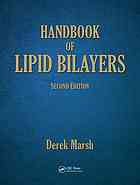

Most ebook files are in PDF format, so you can easily read them using various software such as Foxit Reader or directly on the Google Chrome browser.
Some ebook files are released by publishers in other formats such as .awz, .mobi, .epub, .fb2, etc. You may need to install specific software to read these formats on mobile/PC, such as Calibre.
Please read the tutorial at this link: https://ebookbell.com/faq
We offer FREE conversion to the popular formats you request; however, this may take some time. Therefore, right after payment, please email us, and we will try to provide the service as quickly as possible.
For some exceptional file formats or broken links (if any), please refrain from opening any disputes. Instead, email us first, and we will try to assist within a maximum of 6 hours.
EbookBell Team

0.0
0 reviews"Preface to the Second Edition It is now more than 20 years since publication of the first edition, which has been out of print for an unjustifiably long period. At the time of preparing the original edition, the available data were far fewer and the task of assembly by a single individual seemed almost possible. The situation is now utterly different - daunting to say the very least - and I hope that I have been able to do justice to the many workers in the field. The format of the original edition has been retained, but all sections containing data have been updated and expanded - many of them vastly. This is true of the part on glycolipids, where previously no data was available in some categories, as well as of the phospholipid part. A new feature, included on recommendation of the reviewers, is that the introductory section of each chapter contains considerably more explanation and elaboration. Previously this served simply to define the quantities tabulated; now more description is given and, in many cases, extensive analysis of structural connections between the data is given. The latter, for the most part, was not explicit in the original publications and consequently I have subjected much of the analysis to a series of reviews submitted to refereed journals. These are referenced in the appropriate chapters and some of them are listed at the end of this preface. In the chapters on crystal structures of phospholipids, as well as new structures and more comprehensive data on bond lengths, bond angles and torsion angles, all coordinates are now given in normal X,Y,Z coordinates, and not just in the original (frequently oblique) fractional crystal coordinates. This should make the data far more accessible to the non-crystallographer"--Provided by publisher.
"Preface to the Second Edition It is now more than 20 years since publication of the first edition, which has been out of print for an unjustifiably long period. At the time of preparing the original edition, the available data were far fewer and the task of assembly by a single individual seemed almost possible. The situation is now utterly different - daunting to say the very least - and I hope that I have been able to do justice to the many workers in the field. The format of the original edition has been retained, but all sections containing data have been updated and expanded - many of them vastly. This is true of the part on glycolipids, where previously no data was available in some categories, as well as of the phospholipid part. A new feature, included on recommendation of the reviewers, is that the introductory section of each chapter contains considerably more explanation and elaboration. Previously this served simply to define the quantities tabulated; now more description is given and, in many cases, extensive analysis of structural connections between the data is given. The latter, for the most part, was not explicit in the original publications and consequently I have subjected much of the analysis to a series of reviews submitted to refereed journals. These are referenced in the appropriate chapters and some of them are listed at the end of this preface. In the chapters on crystal structures of phospholipids, as well as new structures and more comprehensive data on bond lengths, bond angles and torsion angles, all coordinates are now given in normal X,Y,Z coordinates, and not just in the original (frequently oblique) fractional crystal coordinates. This should make the data far more accessible to the non-crystallographer"--Provided by publisher